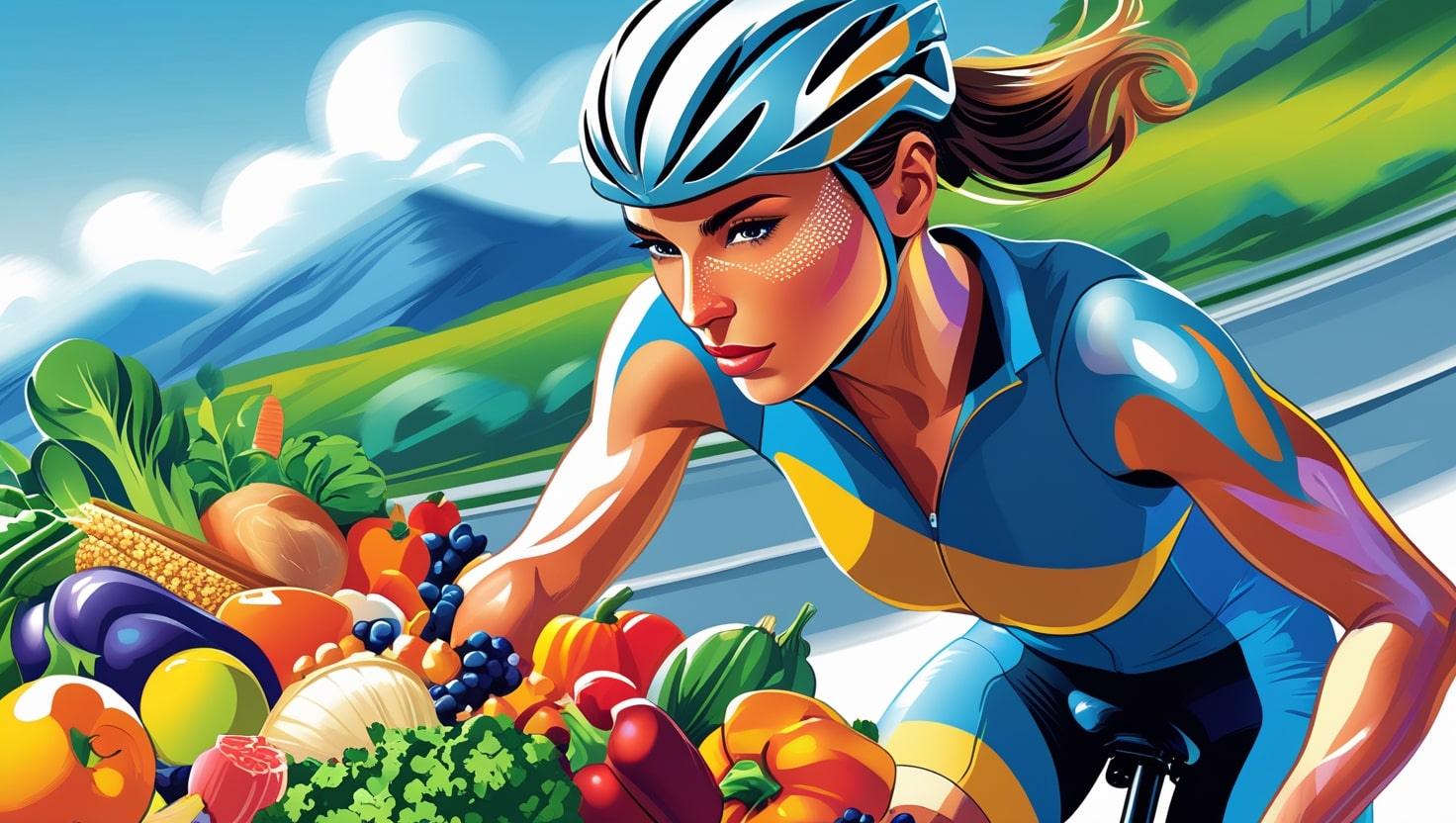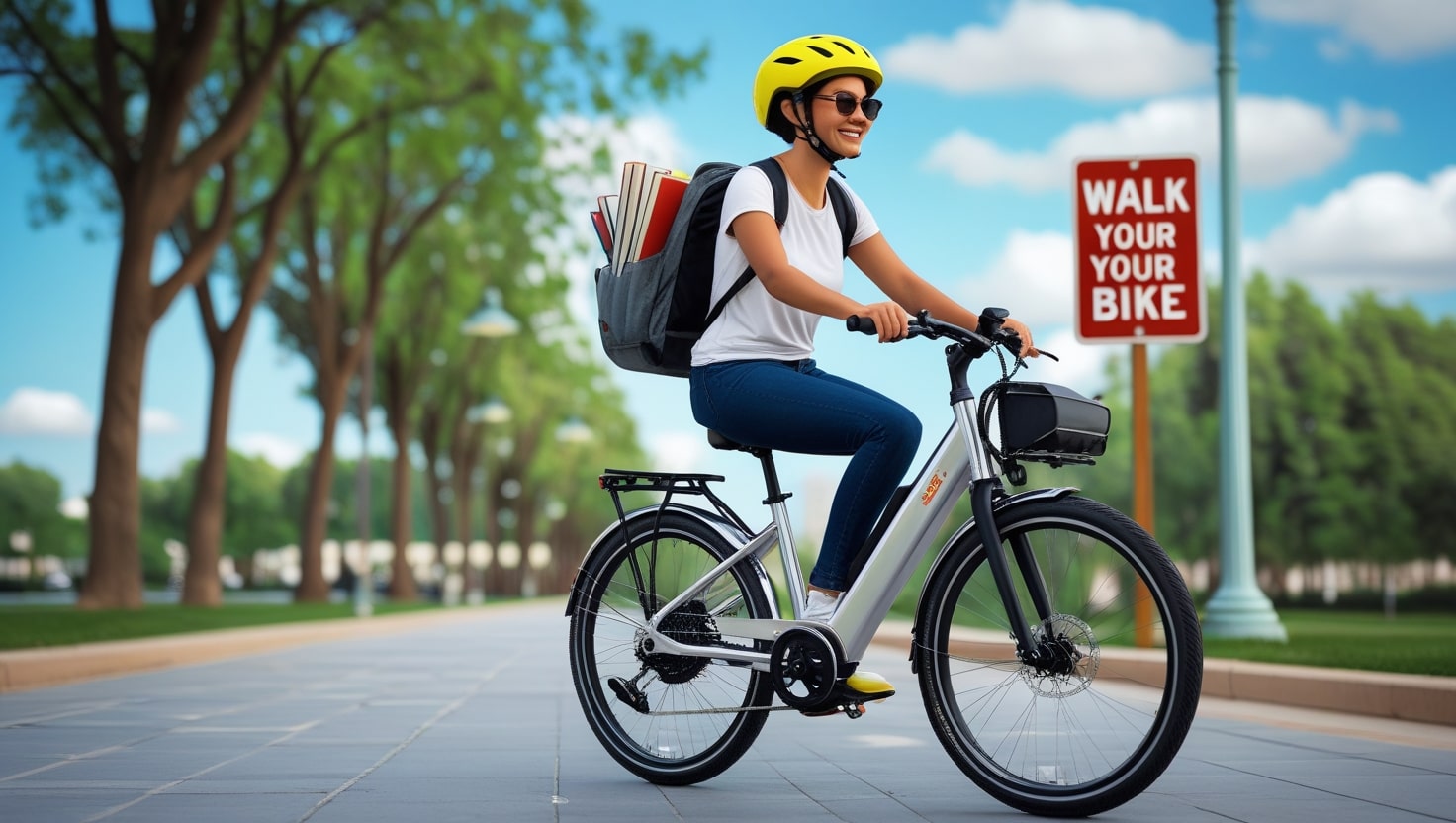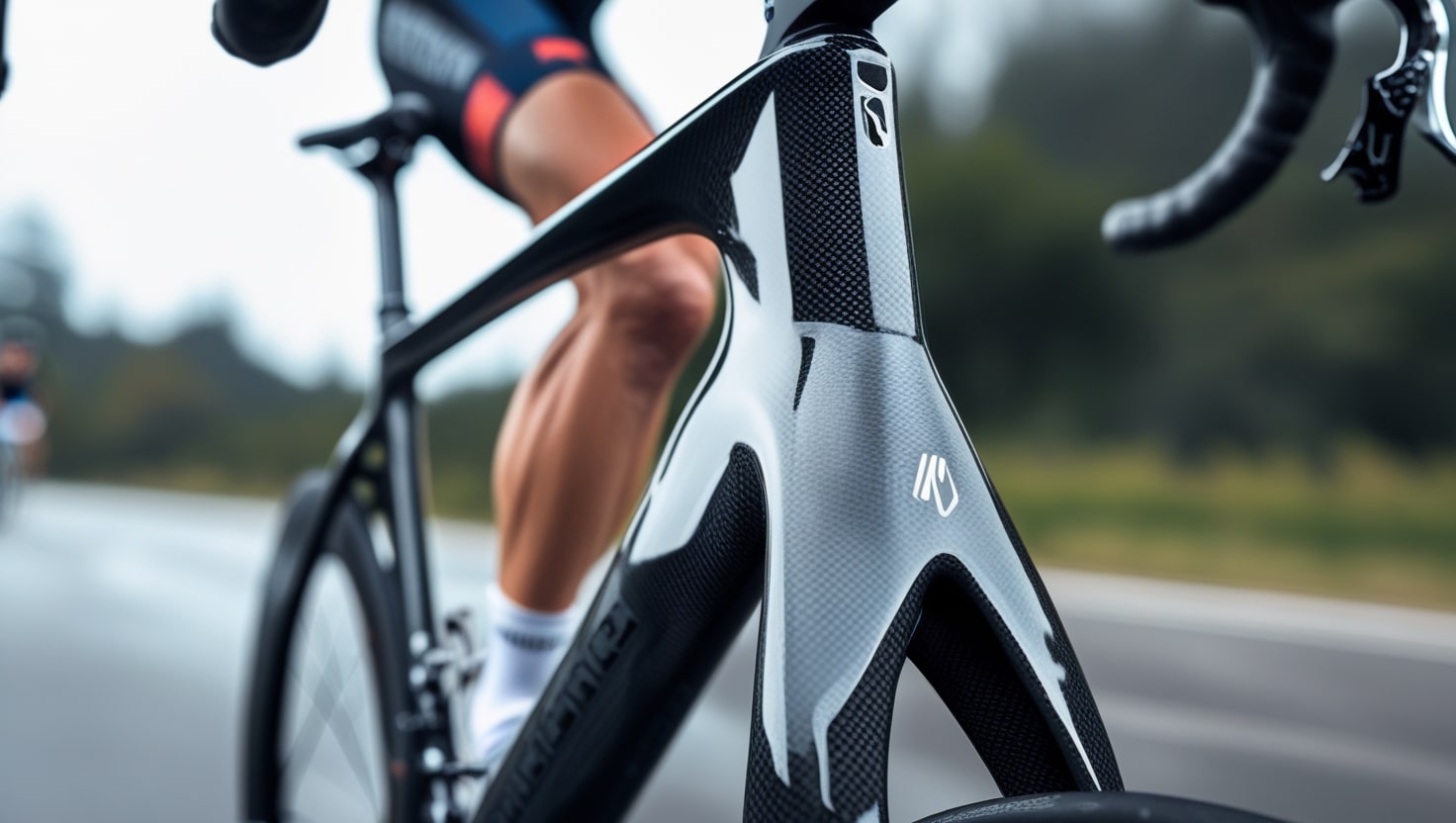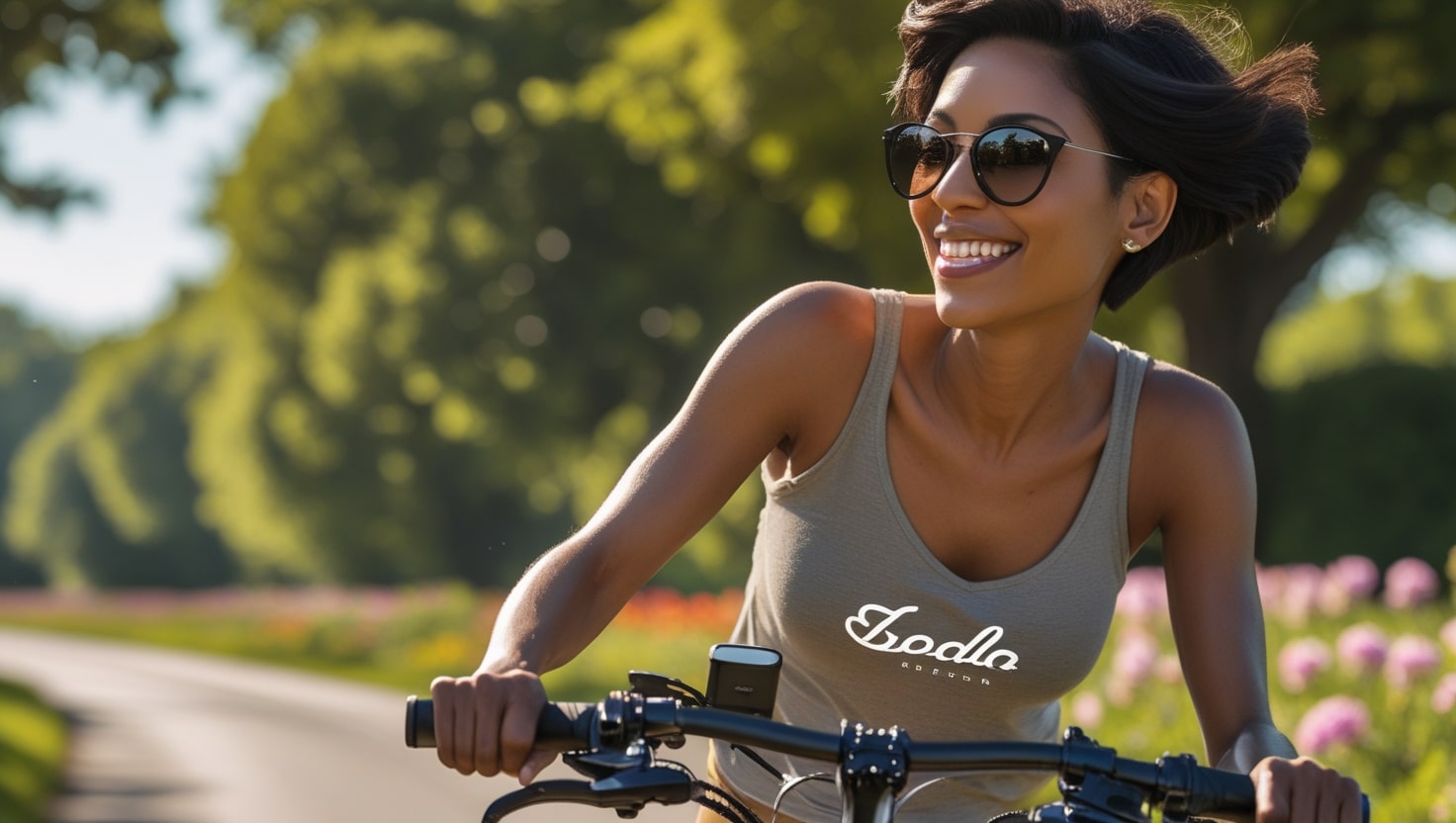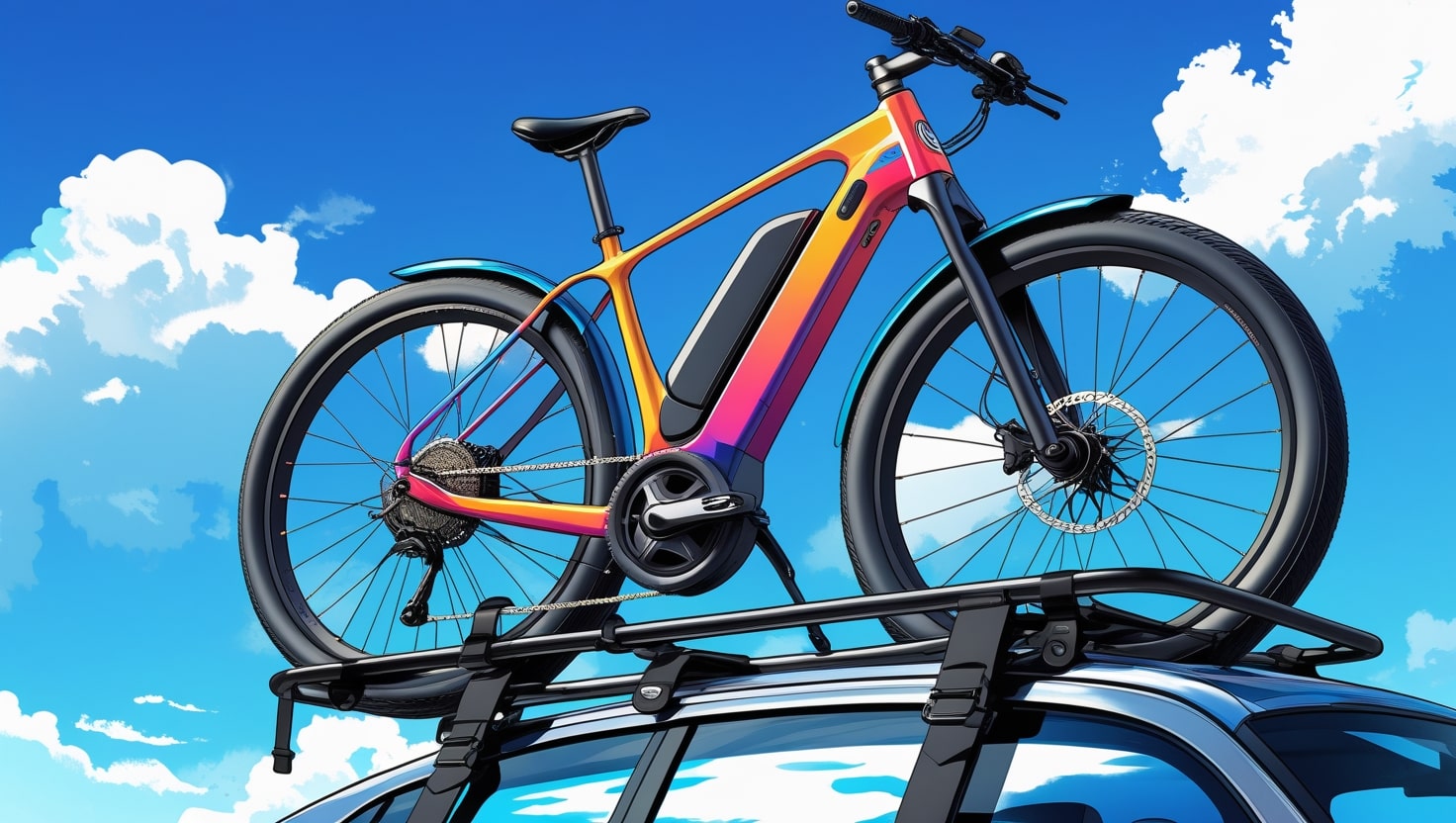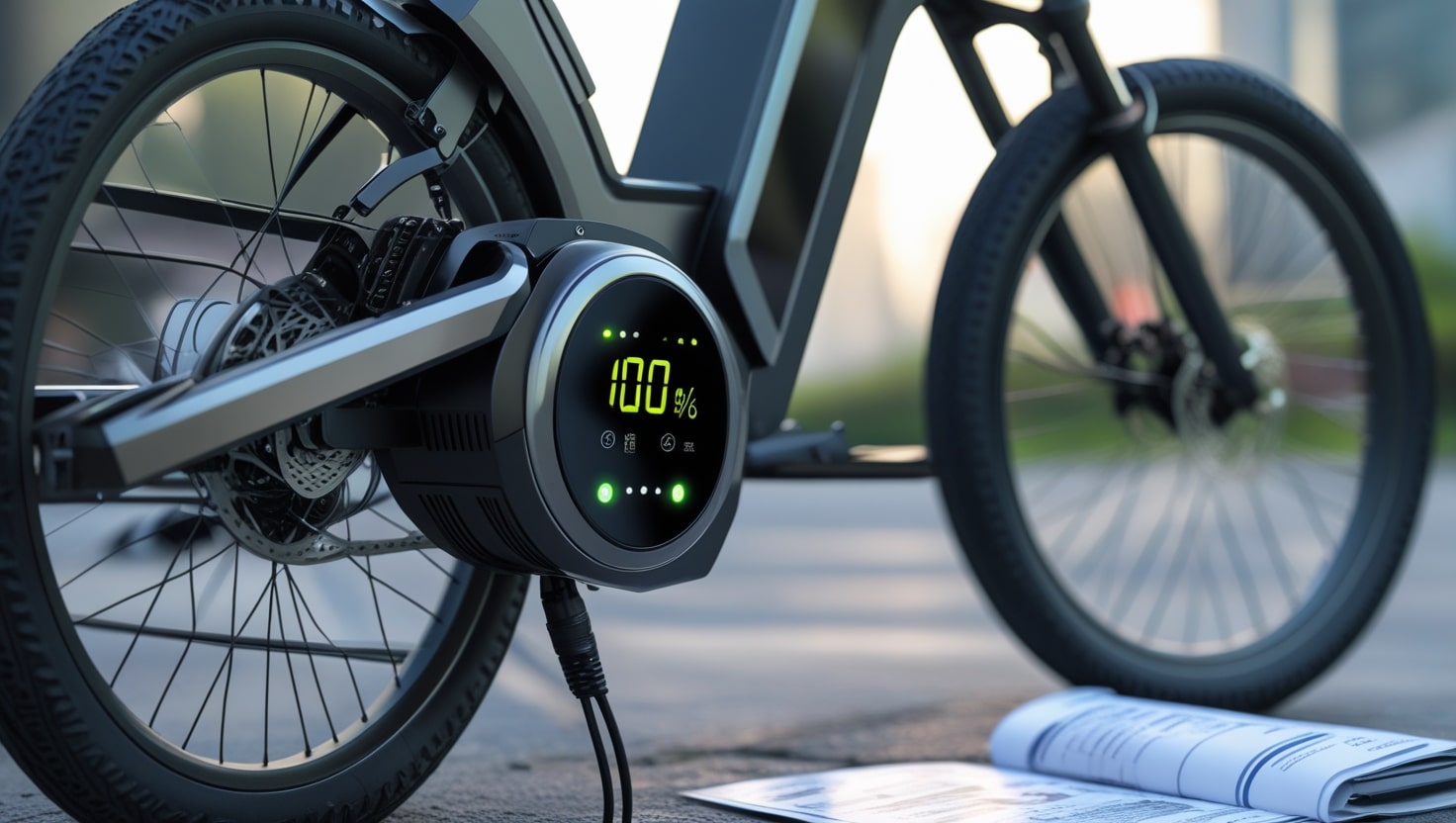As someone who has spent years in the saddle, I’ve learned that nutrition for cyclists is not just about what you eat, but when and how. Many new riders often feel overwhelmed by the sheer volume of information available—some of it conflicting, much of it confusing. It’s easy to get lost in a complicated package of do’s and don’ts.
I’ve been there—invested the money in flashy wheels, logged endless hours to train harder—only to realize that none of it works well without getting the basics right. A simple and consistent approach to fueling your body with the right food is the real bedrock of cycling performance and overall wellness.
Your diet should never feel like a burden or something only greedy pros obsess over. It’s about being smart and using the right tools to build a plan that works for you. For me, that meant understanding when to focus on carbohydrates, how to balance protein intake, and learning exactly what to eat before, during, and after each ride.
Your cycling nutrition guide
Here are four important things to keep in mind to make sure you hit all the bases when it comes to cycling nutrition:
Always eat whole foods that give your body the nutrients, vitamins, and minerals it needs to support intense cycling sessions.
A smart plan and flexible diet have helped me avoid burnout and boost endurance both on and off the bike.
My go-to strategy includes a steady mix of hydration, real-food fuel, and proper electrolytes to recover faster.
Don’t forget to drink regularly—this sounds simple, but it’s easy to overlook during longer rides, so a solid hydration plan is a must.
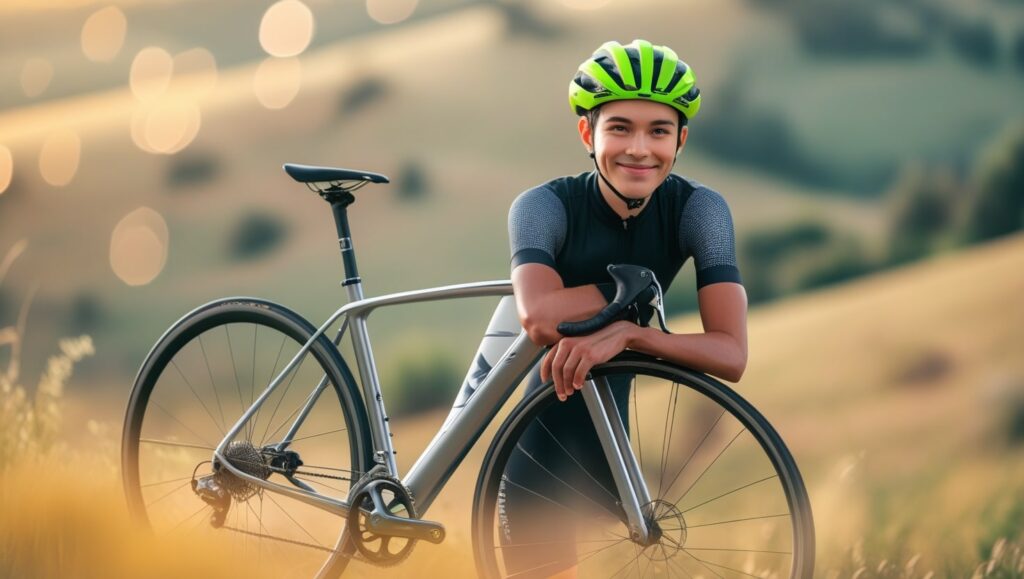
Important nutrients, vitamins and minerals for cyclists
- To stay fit, perform at your best, and recover quickly after each cycle, your diet must be packed with important nutrients tailored for cyclists.
- I’ve found that including Carbohydrates for energy, Protein for muscle repair, and minerals like Magnesium and Iron really helps support active bodies.
- Getting enough Vitamin D, Vitamin C, and Vitamin E is also crucial—these keep the immune system strong and reduce inflammation, which is a key step in staying healthy on and off the road.
Carbohydrates
In my years of cycling, I’ve learned that the way your body uses carbohydrates is key to how you perform, especially on long rides. When you cycle for over 90 minutes, your stored glycogen in the muscles starts to drop, and that’s when the dreaded bonk can hit—trust me, I’ve felt it. That’s why smart fuel timing at regular intervals is crucial. You want a strategy that keeps your energy up throughout your ride, especially during high-intensity sessions or events like a sportive, Audax, or race.
To avoid fatigue and get the best out of your training, your intake of carbs needs to be planned carefully. Depending on the intensity, aim for around 30g–60g of carbs per hour, and up to 90g if using a dual source mix of glucose and fructose (yes, the sugar found in fruit). This improves absorption and gives your digestive system a better shot at turning that fuel into usable power. It also trains your bodies to handle higher carb loads efficiently and supports weight-loss, power, and capability goals. It’s something I always practice in training so my system adapts well before event day.
At Veloforte, we’re big on healthy carbs, and I regularly use their bars—especially the Classico, Ciocco, and Di Bosco—as part of my nutrition routine. These are designed to boost endurance and support performance through well-balanced, natural ingredients. Each one is built to help develop a fueling routine that fits your pace and strengthens your mind–body connection while on the move.
Protein
As a cyclist, I’ve learned that protein plays a far bigger role than just building muscle—it helps strengthen and repair tissue that gets stressed during intense exercise. Each ride creates strain on your body, breaking down muscle fibres that must be patched up to adapt and get stronger. This is where metabolic reactions, fluid balance, and pH stability come into play—functions that protein helps regulate, coordinate, and keep in balance for improved health and performance.
To optimise recovery and support lean mass, I aim to consume between 1.2g–2.2g of protein per kg of body weight, depending on intensity. The key is spacing your intake throughout the day—don’t overdo it at once. I typically measure out around 200g throughout meals and snacks to ensure I absorb it efficiently. I also like to combine carbohydrates and protein after long rides to increase the benefits. Ride, gulp.
My go-to fuel comes from Veloforte—especially their Forza and Mocha protein bars, plus the recovery shakes. These not only deliver a tasty boost but also help maintain essential muscle functions, even supporting glistening gains (though I joke about that). Whether I’m out on a recovery spin or a back-to-back training block, keeping a protein bar handy during or after the session makes a noticeable difference.
Vitamin D
Many cyclists, myself included, often underestimate the role of Vitamin D in everyday cycling performance. Even with hours spent in the saddle, wearing sunscreen or riding in cloudy places like the UK means our bodies may not get enough sunlight to meet the needed intake.
Although the sun can provide up to 80% of your body’s Vitamin D needs, it’s not always reliable year-round. And while your diet plays a role, food alone isn’t enough to support key benefits like improved metabolism, stronger bones, quicker recovery, and more resilient muscles.
That’s why I personally supplement with Vitamin D3, which has better absorption than other forms. Experts recommend anywhere from 1000 to 5000 IU daily, depending on your needs, to safely maximize your levels.
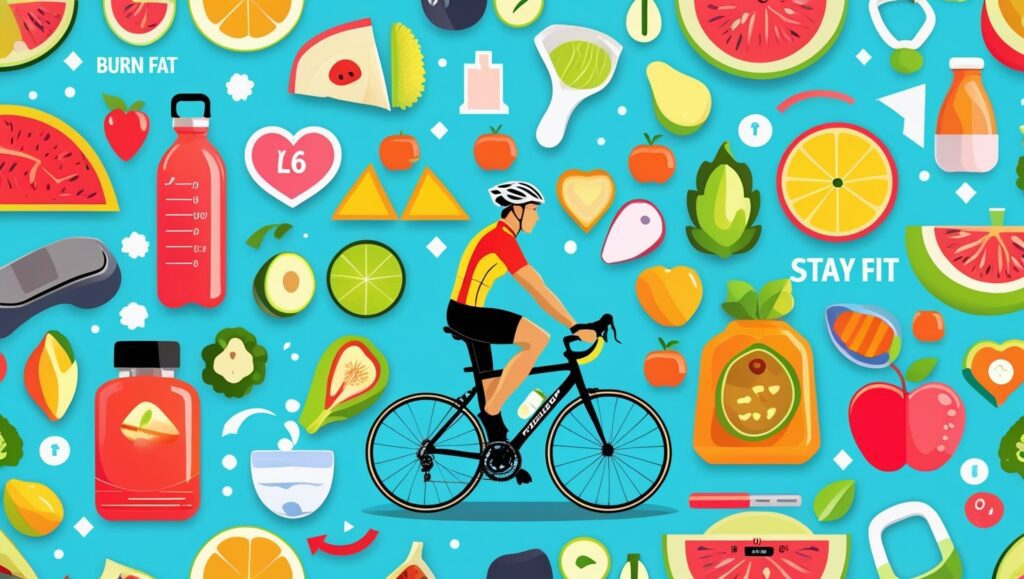
Vitamin C
For cyclists, staying healthy off the bike is just as important as performance on it. One essential nutrient I always keep in my diet is vitamin C. It helps boost the immune system, protect the eyes, and defend against cardiovascular disease—not to mention its role in fighting wrinkles and supporting healthy complexions. If you’ve ever missed a ride stuck in bed, you’ll know how important that is. Even if you’re spending long hours in the saddle, you can still fall short on intake without the right foods.
I aim to maximise my vitamin C by eating plenty of vegetables and fruits, especially citrus, kale, broccoli, tomatoes, and cauliflower. While many people think 5 a day is enough, I’ve found aiming for 8 or even 9 portions of fruit and veg each day works better for both recovery and long-term health. And when I fall short? I use supplement tablets, typically around 500mg, to stay covered. It’s a small effort with big benefits and one of the easiest ways to keep your immune system ride-ready.
Vitamin E
As a cyclist, I’ve learned that Vitamin E is more than just a small part of your nutrition—it plays a key role in protecting your cells, muscles, and especially your lungs. This becomes even more important when riding at altitude, where lung capacity can be a limiting factor. Some research even shows that a higher intake of Vitamin E can boost that capacity, giving you more breathing power on longer climbs. Sadly, common supplements won’t deliver the same benefits, as the most effective form comes straight from food.
You’ll find Vitamin E naturally in foods like nuts, olive oil, and other healthy fat sources. I always try to include a handful of nuts in my snacks or drizzle olive oil over my meals. Just make sure you steer clear of corn, canola, and soybean oils—they might be detrimental to your health in the long run. The best approach is to stick with a balanced, healthy diet and focus on quality ingredients.

Magnesium
As a cyclist, I’ve come to respect how magnesium quietly powers so many parts of the body. It helps regulate blood sugar, pressure, and nerve function and even supports bone development—all of which are essential when you’re riding or deep in training. Magnesium also plays a key role in processing carbohydrates and fats for fuel, helping you get more out of every pedal stroke.
The more you sweat, the more you lose it—along with magnesium going out through urine—so if you’re pushing hard, aim to increase your intake by about 20% to avoid becoming deficient.
I try to get mine from Whole Foods—plenty of vegetables, fruits, nuts, seeds, fish, poultry, beef, and yes, the occasional piece of chocolate (or choc, if you’re like me). Both women and men have specific needs—roughly 320mg for women and 420mg for men daily. If I know I’ve been sweating a lot or my diet’s been light, I’ll take a supplement to be safe.
Iron
If you’re serious about cycling, don’t overlook iron—it’s essential for building and maintaining red blood cells, which carry oxygen to your muscles during intense rides. When I was exercising daily without enough iron in my intake, I felt fatigued, weak, and learned the hard way how low levels can lead to anaemia. This is because your body loses iron during training, making it vital to replenish regularly to keep your performance and capability strong.
For women, the recommended amount is around 18mg daily, and for men, it’s about 8mg. You can get iron through meat, fish, and healthy whole foods, or from vegetarian and vegan sources like kale, spinach, and broccoli. Pairing these with vitamin C helps your body absorb more iron—something I always try to do. I also use a small supplement if my food alone doesn’t cut it. Whether you’re out to build strength, maintain energy, or avoid becoming anaemic, getting your iron right will help maximize performance and recovery.
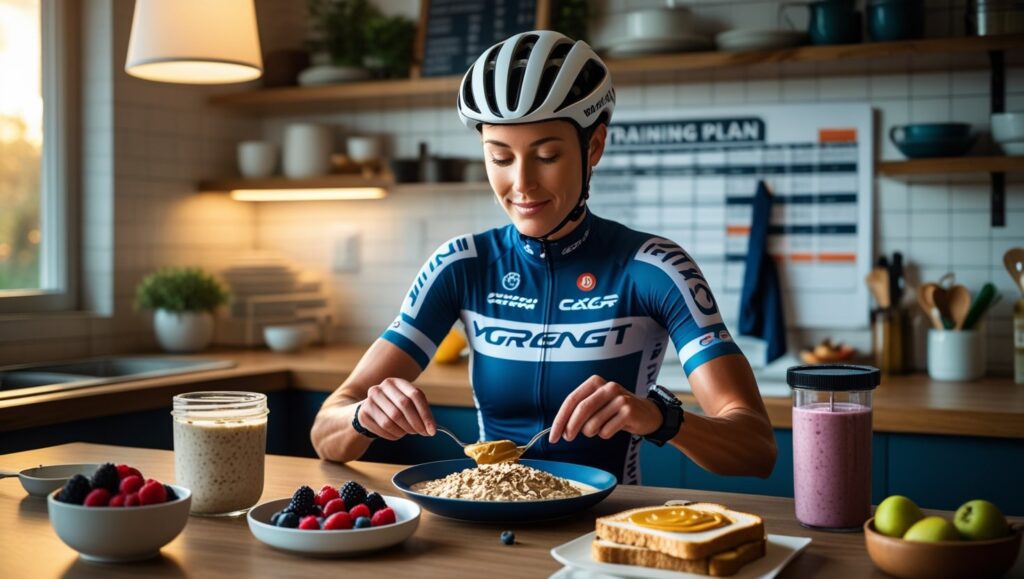
Best cycling foods for fuelling on and off the bike
Energy bars
When a ride stretches beyond 90 mins, having the right fuel on hand can make all the difference in avoiding burnout—especially on a tough trail. I always pack a couple of energy bars from Veloforte, not just for their smart natural ingredients but because their recipes strike the perfect balance between performance and taste. These bars give me the boost I need and let me actually enjoy what I eat while out cycling, making each long session feel more rewarding and sustainable.
Protein bars
After long or intense riding, I always reach for a small, convenient bar that gives my body the fuel it needs to recover. Protein bars like Forza and Mocha are packed just right, and when you aim for a 3:1 ratio of carbohydrate to protein, you get a steady release of energy and support for your muscles too.
Energy gels
When you’re deep into long rides and need a speedy burst of energy, gels are a smart, conveniently packed option, especially if you’re not in the mood for bars. I’ve found Veloforte’s natural gel blends to be perfect for cycling—they deliver the carbohydrates your body needs quickly and cleanly, without any fuss.
Recovery Powders
After a tough ride, I always reach for recovery shakes to give my body the protein it needs to recover quickly and efficiently. These powders are designed to help your muscles bounce back from exertion and support healthy development over time.
Pasta and rice
Before a big ride, I often turn to pasta or rice—they’re cheap, quick, and incredibly easy to prepare, making them perfect go-to meals for loading up on carbohydrates and sugars your body needs. These foods help fuel your muscles and give you lasting energy, but it’s important to balance your plate and control portion sizes so you don’t overdo it.
Green vegetables
One of the easiest ways I support my body as a cyclist is by making sure I eat plenty of green veggies like kale, spinach, broccoli, cabbage, and cauliflower. These are loaded with vitamins and minerals that keep my system running strong, especially when training back-to-back. They also give a natural iron boost, which is important for endurance and energy.
Potatoes
Whether you prefer white or sweet potatoes, both are excellent choices for cyclists looking to load up on carbohydrates, protein, and essential vitamins. Sweet potatoes are especially rich in vitamin A, while white ones give you a solid dose of potassium—great for muscle function and recovery. Just remember, while the benefits are strong, it’s best to enjoy them in moderation—not as fries or crisps, but as part of a balanced, healthy plate.
Porridge
I always start my morning ride prep with porridge made from oats, one of the most nutritious grains out there. They’re cheap, widely available, and naturally gluten-free, making them ideal even for coeliacs. A bowl keeps me feeling full for hours and is easy to eat before a long training session. Beyond that, oats are packed with vitamins and minerals like magnesium, iron, zinc.
Salmon
Adding salmon to my weekly meals has been a game-changer—it delivers a clean protein kick while being packed with healthy fats, especially Omega 3. This fish is rich in essential minerals like potassium and selenium, both of which help support muscle function and recovery. Studies also link salmon to weight loss support and reducing the risk of heart disease.
Nuts and oils
One of my go-to snack options after a ride is a handful of almonds—not only do they satisfy hunger, but they also provide up to ⅓ of your daily intake of vitamin E, which is hard to get from other sources. I often toss a bit of oil over salads or add it to post-training meals to further boost the benefits. Unlike supplements, natural sources of vitamin E are more effective, and when eaten in moderation.
Red meat
When I need to boost my iron intake, especially during heavy training weeks, I often turn to red meat—it’s one of the most effective and natural ways to fuel up. It also gives a strong dose of protein, which supports muscle repair and growth. For those who aren’t vegan or vegetarian, choosing leaner cuts helps manage fat levels while still getting the nutritional benefits.
Citrus fruits
I always try to include citrus fruits in my daily routine—not just for their fresh taste but because they’re packed with vitamin C, which helps boost iron absorption from green vegetables. Whether I’m hitting my 5+ a day target or just increasing my overall intake, fruits like oranges and grapefruits are a reliable option.
Importance of cycling hydration
One thing I never take lightly during cycling is staying hydrated. Losing fluid through sweat and urine during intense rides can impact both digestion and performance. Even mild dehydration can slow you down or lead to cramps, especially in warm conditions. I try to follow the standard advice of drinking 6–8 glasses of water per day, and add more fluid during long sessions. A quick way I check my hydration is by weighing my bodyweight before and after a ride—if I’ve lost 0.5kg, I know I need at least 500ml of water to rehydrate.
Hydration isn’t just about water. To maintain proper balance in the body, I use electrolyte support like Veloforte Electrolyte Powders, especially on hot days. These provide essential minerals that carry a tiny electric charge, keeping my pH levels steady. I often use pre-mixed electrolyte drinks, or drop a tablet into my water bottle to make sure I’m replacing what I lose. Energy drinks can also help if used wisely, especially when they’re not made from cheap concentrate.
For a more natural approach, I sometimes blend a smoothie with cherry, orange, or watermelon, or go for a small bottle of real fruit juices like orange juice. These are packed with sodium and other helpful minerals to boost hydration and keep my system in check.
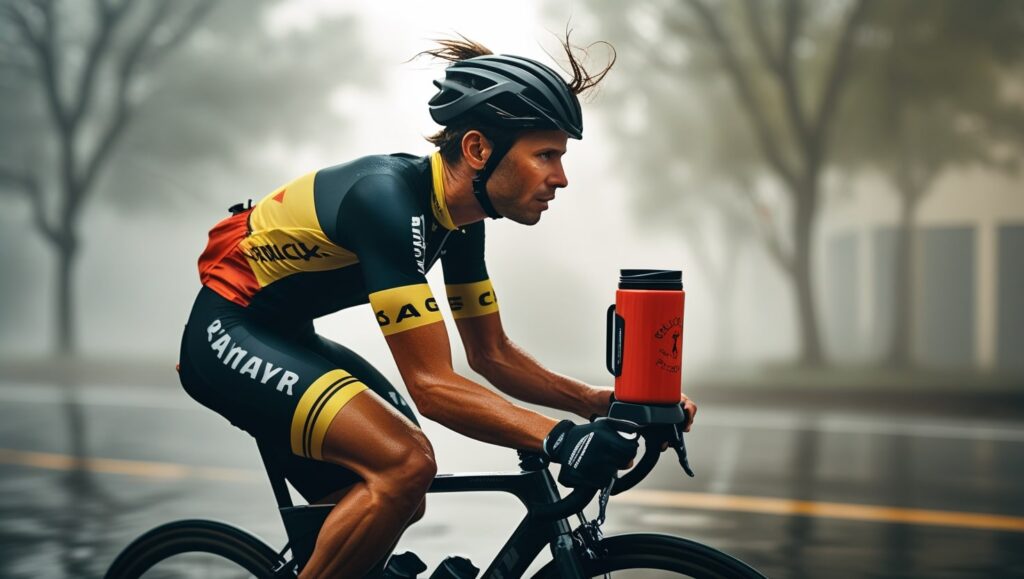
Set up your cycling diet and nutrition plan
Pre-ride: Start light with a good mix of protein and hydration. I usually go for porridge or scrambled egg alongside half fruit juice and half water.
During cycling: Focus on carbohydrates to keep your energy steady. Energy bars are my go-to because they’re quick, portable, and easy to digest during long rides.
Post-ride cycling recovery: Your body needs to recover, so I refuel with a mix of protein and carbohydrates—things like recovery bars, nuts, and dry fruits help repair muscles and support post-ride hydration and replenishment.
Pre-cycling ride meal
Whether it’s a pre-ride training session or a pre-race event, your meal—often breakfast—should be planned to top up glycogen stores and keep you hydrated. I’ve found that a well-balanced meal that’s easy to digest makes a big difference on race day, especially when digestion might feel harder due to nerves.
Key pre-ride nutrition tips
Before heading out, I always focus on foods that offer a steady release of carbohydrates and quality protein. My go-to options include porridge, wholemeal toast, or a bagel, often paired with unsweetened yogurt, scrambled egg, nuts, or seeds for added fuel.
To hydrate, I sip on half fruit juice and half water—the fructose in the juice gives a light carb top-up without being too heavy.
During cycling food
There are different ways to fuel for different types of riding workouts. Below are a few examples:
Easy Days and Recovery Rides
On lower intensity days or shorter rides—especially anything under an hour—you won’t need much fuelling, as your glycogen stores and fat stores can handle the energy demands. In fact, I often use these short rides to train my body to burn fat more efficiently by riding in a fasted state before breakfast. Just be careful—if you go this route, make sure to refuel well afterward to avoid burnout later in the day.
High-intensity cycling rides: hills and intervals
To really perform during tough training sessions—like hill climbs or interval work—you need to be properly fuelled. I always make sure to have a carbohydrate snack about an hour before the ride, and eat enough carbohydrates throughout the day to keep my energy steady. If the session is longer than 90 minutes, I bring carbs with me on the bike and plan to refuel right after with a balanced meal including protein. One of my go-tos is a Forza bar—it’s compact, powerful, and ideal for recovery when I’m short on time between back-to-back workouts.
Long-distance cycling rides
When I plan a long ride that lasts several hours, I always follow a well-tested nutrition strategy. It’s essential to have a nutrition plan that includes carbs at a rate of 60g–90g per hour, starting about 20-minutes into the ride. This steady fuel keeps my body energized and prevents dips in energy. These longer sessions also act as good preparation for race day, helping you replicate effort and test your approach under realistic conditions.
To get it right, I recommend doing a full race rehearsal once a month and at least one long ride every week. Use these sessions to test which foods, fluids, and timings work best for you. Trying different flavors of bars helps you figure out what your body tolerates and what you enjoy eating. Trust me, flavour matters—if it tastes good, you’re more likely to stick with it and stay consistent during long-distance cycling events.
Related: 10 Essential Tools for a Bike Ride
Post-ride cycling nutrition for recovery
No matter if it’s a short, easy spin or a hard training session, your ride recovery starts in the first 30 minutes—also known as the glycogen window or replenishment window. This is when your body is most ready to replenish glycogen stores and repair damaged muscles from the exercise.
After a tough race or regular session, I always aim to fuel up right away so I don’t miss that critical window.
Our 5 key cycling nutrition tips
1. Consume the right amount of calories
When it comes to cycling, managing your calorie burn is just as important as the fuelling itself. Your body weight, intensity of the ride, and total distance all play a role in how many calories you need. A good rule of thumb is to multiply every mile by 40–50 calories, meaning a 20-mile ride could require around 800–1000 calories. I often rely on tools like a power meter, heart rate monitor, or GPS device to track this more accurately—but always make sure your personal data is correct, and don’t blindly trust software, as it can overestimate calorie consumption.
On easy rides or non-exercising days, your hunger may still spike, but that doesn’t mean you should overdo it. After your ride, it’s essential to eat for recovery, but stick to healthy food and moderate your portions. I aim to consume only slightly more than usual and avoid falling into the trap of piling on extra calories—especially when things like carrot cake at the café stop look tempting.
Remember, the number of calories burnt during exercise depends on each cyclist. Riders doing hard rides will naturally use more energy, but always consider how much you’ve already consumed during the ride. I personally track calories consumed and match it to effort level—no matter how big my appetite, it’s about balance, not reward eating.
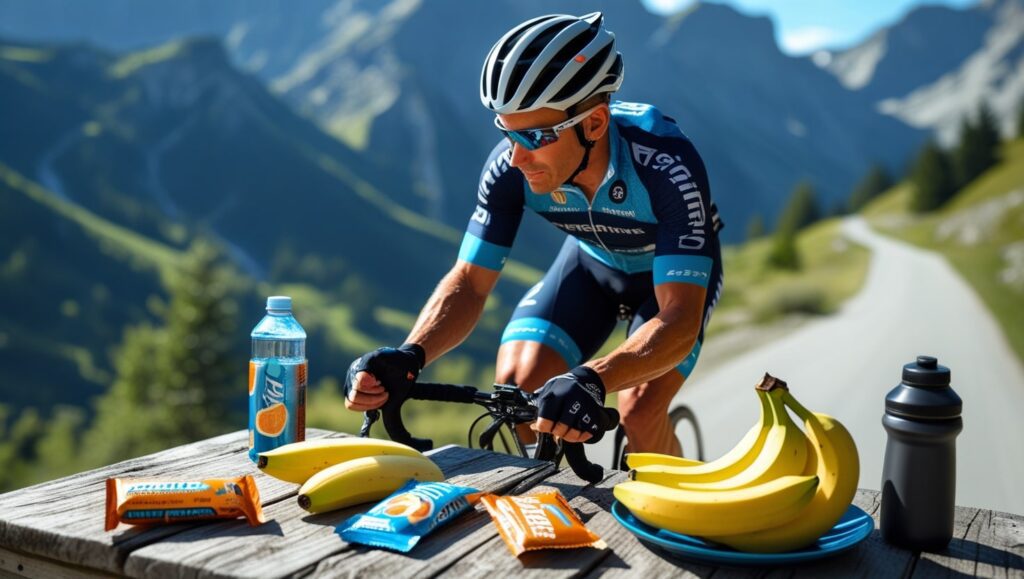
2. Make sure to eat enough protein
For cyclists focused on maintaining a lean body weight, it’s a myth that protein only leads to bulky muscle mass. In fact, it plays a key role in overall health, especially for those involved in endurance exercise. A balanced diet that includes protein provides amino acids, the essential building blocks needed for muscle repair. After hard training, it’s important to eat protein within a few hours of cycling so your body can strengthen and repair the damaged muscle fibres effectively.
Protein helps with weight management and blood sugar balance in addition to repair.
Compared to other nutrients, protein is lower in calorie impact while helping you feel fuller for longer, especially when paired with a carbohydrate. It slows the release of glucose into the bloodstream, avoiding sudden sugar spikes and energy crashes — a key benefit during training periods.
When you’re in need of a light snack between meals, reach for protein-rich foods. Options like nuts, natural yogurt, or peanut butter go well with slow-release carbohydrates such as oatcakes, wholemeal bread, or even a crisp apple.
3. Eat natural foods for cycling
When you eat and drink, your body doesn’t just respond to the number of calories but also to the quality of what you consume. It’s not enough to load up on carbohydrate—what really matters is whether you’re fuelling with natural foods. These offer huge benefits compared to processed or synthetic products, because they’re richer in essential vitamins, minerals, and fibre that the body can absorb and recognise easily.
Take the Tour de France for example. Riders who are biking and burning up to 5000 calories per day still rely heavily on whole foods in their diet. Entire teams, with expert Chefs and mobile kitchens, prepare fresh, nutritional food from scratch to make sure the riders stay healthy and consistent across multi-stage events.
On top of the health perks, eating well adds to the enjoyment of the sport. Maintaining variety in meals is crucial during a tough three-week Grand Tour or multi-day race to avoid growing weary of the same dishes. Variety helps prevent boredom and keeps the meals exciting. Even we regular humans benefit from tasty treats that nourish both the body and spirit.
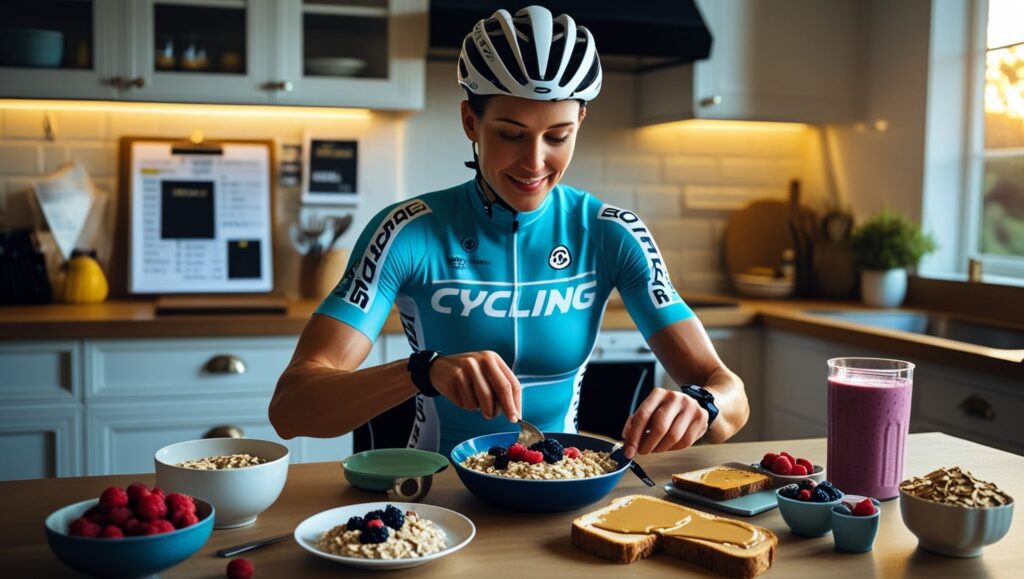
4. Go for the good fats
Many cyclists avoid fat, thinking it’s all bad, but not all fats are the same. Good fats like Omega 3, Omega 6, and Omega 9 are crucial for overall health, especially when you’re training regularly. They help keep your joints moving smoothly, protect your cell walls, and even reduce inflammation, lowering the risk of heart disease and strokes. These polyunsaturated and monounsaturated fats are an important part of any solid cycling diet.
I always include nuts, seeds, avocado, and cold-water oily fish like salmon in my weekly meals, along with healthy oils such as olive oil and coconut oil. These foods help me recover faster and feel stronger on long rides. But I’m careful to avoid bad fats like saturated fats found in some meats, dairy products, and most processed foods.
Since fat has the highest number of calories per gram of all macronutrients, I aim for around 20g of fat per day to stay balanced without overloading.
5. Don’t forget your vitamins and minerals
When it comes to cycling, it’s not just about the big nutrients like carbohydrates or protein, but also the smaller ones—vitamins and minerals—that help your body stay strong and resilient. I always remind new riders that eating a variety of rainbow-colored fruits and vegetables with every meal is one of the simplest ways to keep your daily diet balanced.
The NHS might suggest three servings of veg and two of fruits per day, but many medical experts recommend bumping that up to seven or even eleven servings to truly support your health.
To get there, try mixing in sweet potato instead of plain white rice or pasta, and keep snacks like dried fruit handy. At home, I like to prep bowls with colorful veggies and a handful of nutrient-dense ingredients. Even protein bars and energy bars like the ones from Veloforte, which are made with real fruits, can be a helpful addition when time is tight. The key is to eat these options regularly, not just once in a while.
Not only do these foods help maintain a strong immune system, but they’re also loaded with natural benefits that processed alternatives just can’t match.
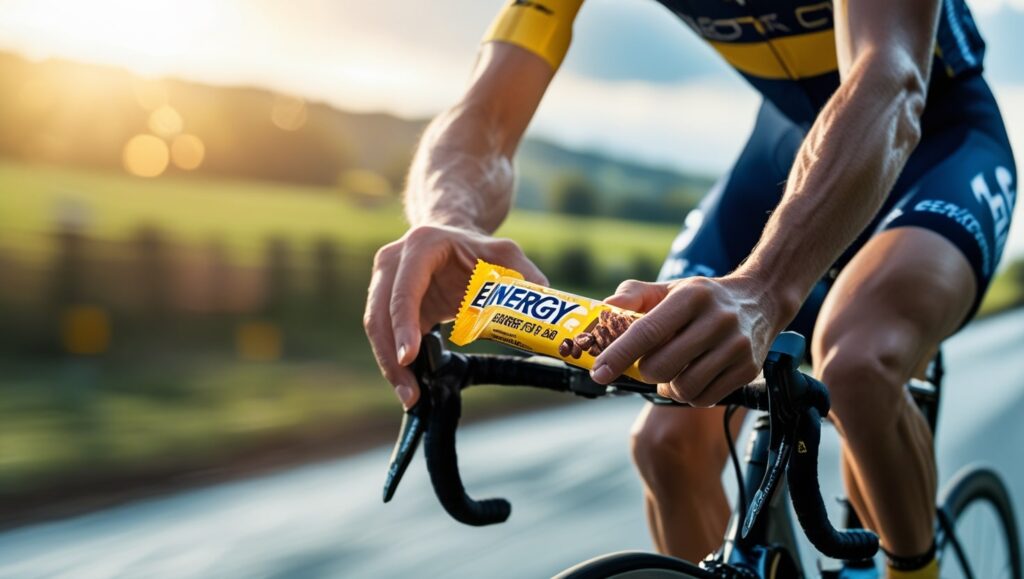
Getting started with cycling nutrition the easy way
1. Define your cycling goals
Before you start riding regularly, take time to think about whether you’re doing it for pleasure or if you’re training for an endurance event. This will help shape a smart nutrition plan that works with your goals. The right food helps you maximize your health benefits and makes every drop of blood, sweat, and tears you leave on the saddle worth it.
You need the right balance of nutrients to support your body so you can train harder and keep seeing real results. Each ride helps you become more active, stronger, and always looking to improve.
2. Create your cycling diet and nutrition plan
Building the right nutrition plan is essential for cyclists aiming to improve performance and feel strong both during and after each ride. Whether you’re prepping for a race or enjoying a weekend spin, it’s important to prepare your body with the right nutrients. Focus on pre-ride meals that boost energy, eat wisely during your ride to stay energised, and don’t skip your post-ride protein and recovery strategies.
To find what works best, experiment with different foods and consistently incorporate them into your routine. Everyone responds differently, so identifying what fits your body and lifestyle is part of the process. Creating your ultimate cycling diet involves balancing all these aspects, and when done right.
3. Create your hydration strategy
For every ride, staying hydrated is just as important as eating well. Make sure you’re drinking enough fluids on a daily basis to keep your body’s fluid levels properly replenished. A smart way to do this is by mixing water, electrolyte tablets, drinks, or even smoothies and fruit juices that help restore your electrolytes and maintain balance in your body’s pH levels. From personal experience, finding the right mix of these options before, during, and after cycling gives real benefits, helping you feel fresher, ride longer, and recover faster.
4. Stock up on cycling food and start testing
Once your plan is in place, the next step is testing it over a few weeks to see what really helps your performance. I usually measure my results after each long ride and often discover which elements are actually working and which aren’t. If something feels off, I don’t hesitate to return to my strategy and alter it to better produce the outcomes I need.
I also make sure to stock up on energy bars, gels, and stay hydrated, while I eat a balanced diet packed with vitamins and minerals. Following a clear guide like this has shown me steady improvement in how I feel and perform on the bike.

